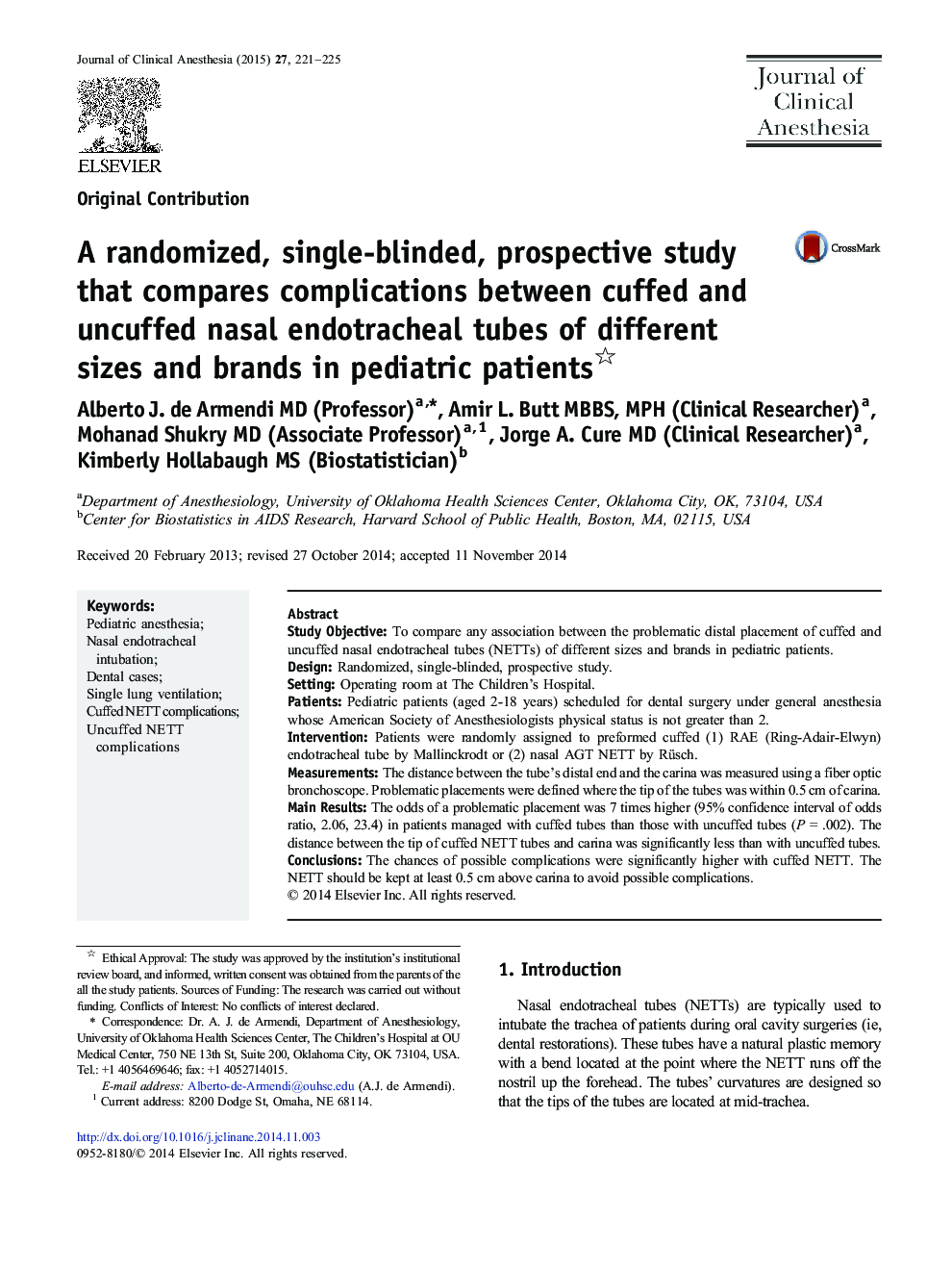| Article ID | Journal | Published Year | Pages | File Type |
|---|---|---|---|---|
| 2762704 | Journal of Clinical Anesthesia | 2015 | 5 Pages |
Study ObjectiveTo compare any association between the problematic distal placement of cuffed and uncuffed nasal endotracheal tubes (NETTs) of different sizes and brands in pediatric patients.DesignRandomized, single-blinded, prospective study.SettingOperating room at The Children's Hospital.PatientsPediatric patients (aged 2-18 years) scheduled for dental surgery under general anesthesia whose American Society of Anesthesiologists physical status is not greater than 2.InterventionPatients were randomly assigned to preformed cuffed (1) RAE (Ring-Adair-Elwyn) endotracheal tube by Mallinckrodt or (2) nasal AGT NETT by Rüsch.MeasurementsThe distance between the tube's distal end and the carina was measured using a fiber optic bronchoscope. Problematic placements were defined where the tip of the tubes was within 0.5 cm of carina.Main ResultsThe odds of a problematic placement was 7 times higher (95% confidence interval of odds ratio, 2.06, 23.4) in patients managed with cuffed tubes than those with uncuffed tubes (P = .002). The distance between the tip of cuffed NETT tubes and carina was significantly less than with uncuffed tubes.ConclusionsThe chances of possible complications were significantly higher with cuffed NETT. The NETT should be kept at least 0.5 cm above carina to avoid possible complications.
